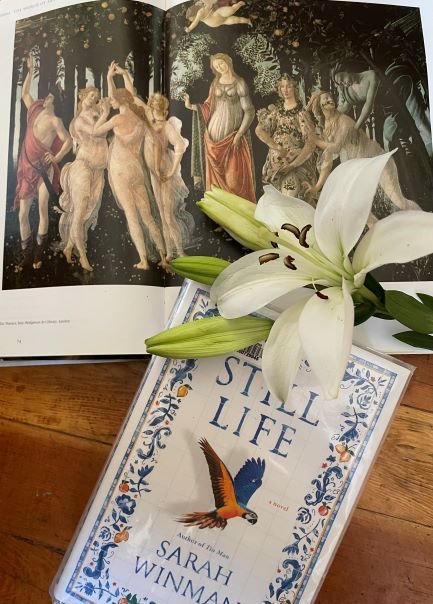The Agony and the Ecstasy
One silver lining of the corona virus stay-at-home order and closure of all nonessential businesses (the public library included), is that I have found myself scanning my bookshelves for unread titles. Irving Stone’s The Agony and the Ecstasy (1961), the biographical novel of Michelangelo, was the first unread book I pulled from my shelves during our quarantine. It’s 661 pages follow Michelangelo Buonarroti throughout his impressive life. Stone’s novel begins with young Michelangelo finding his way to Ghirlandaio’s studio (of fresco painting) as an adolescent. From his apprenticeship at that bodega Michelangelo embarks down a winding path toward artistic greatness. As historical fiction, The Agony and the Ecstasy transports its reader to late fifteenth-/early sixteenth-century Italy. Stone’s work is so detailed and researched that in reading it, I walked the streets of Renaissance Florence, roamed the hills beyond its walls, and interacted with great figures like Da Vinci and Lorenzo de Medici. At a time when traveling was not an option, I found such literary travels — on both geographic and temporal planes — all the more meaningful. Irving’s tome was at once escapist and educational.
This novel follows a linear representation of Michelangelo’s life; Irving introduces Michelangelo the youth and as the novel progresses Michelangelo matures, ages and eventually dies. While the crafting could perhaps have been more interesting (perhaps I have become accustomed many twenty-first-century novels’ manipulation of time and memory), there were elements of Irving’s style that I appreciated. Most notably, Irving weaves snippets of Michelangelo’s poetry (yes, he was a poet too!) throughout the novel. I particularly enjoyed the poetry. There is a heavy dose of Italian history (Florentine and papal, in particular) also woven into the fabric of this novel, and while I found this educational, it was not what kept me reading. I appreciated the humanity of this story; the juxtaposition of Michelangelo the man and Michelangelo the genius.
I wish that Irving would have included images of many of Michelangelo’s great works, as I was constantly setting The Agony and the Ecstasy aside to Google pictures of his various works described. And yet, the scavenger hunt of searching out images of these masterpieces may have added to the fun of reading the biographical novel. The impressiveness of Michelangelo’s works is matched, perhaps only by the many barriers that powerful men of his time placed in his creative path. The Agony and the Ecstasy chronicles Michelangelo’s artistic triumphs (the “ecstasy”) despite the politics of the day, and highlights the tragedy (the “agony”) tied to his genius and perhaps also his personal life.
When, someday, I do manage to make my way to Tuscany and Rome, I will, no doubt, appreciate Michelangelo’s works all the more for having read Irving’s novel; when people do start traveling again, this would be an ideal book to pair with a trip to Florence and/or Rome. For now, in the times of corona virus, it makes for moving literary tourism with its description of the Tuscan countryside, marble quarries, and the cities of Renaissance Rome and Florence (to name only a few of the places Michelangelo’s story takes its reader). What’s more, I believe, The Agony and the Ecstasy breathes flesh and blood into the artistic and architectural masterpieces that remain of the Italian Renaissance. The Medici and papal characters, as well as other creatives of Michelangelo’s lifetime play a role in Irving’s novel as their lives touched Michelangelo Buonarroti (some more prominently than others). For this, and for all the things I did not realize Michelangelo created (poetry, architecture, painting and, of course, sculpture) I appreciated Irving’s novel. Ultimately, The Agony and the Ecstasy portrays Michelangelo the man who is both a visionary artist and a son, brother, friend and lover; it is humanity, as well as the injustice of his time that make Irving’s depiction of Michelangelo’s story so powerful.
Bibliography:
Stone, Irving. The Agony and the Ecstasy: the biographical novel of Michelangelo. Double Day & Co.: New York, 1961.






